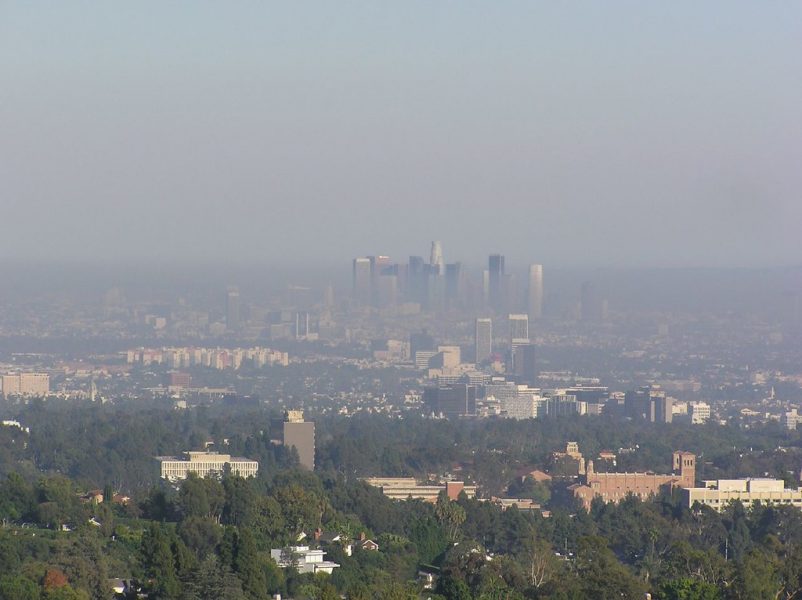New Project Investigating How Aerosols Could Affect Climate Change in Near Future
November 30, 2023

A researcher from The University of Texas at Austin has received a grant from the National Oceanic and Atmospheric Administration (NOAA) to study how changing aerosol pollution could influence climate change in the United States in the coming decades.
Aerosols are tiny solid particles and liquid droplets that contribute to smog and are emitted from industrial factories, power plants and vehicle tailpipes, as well as natural sources like volcanic eruptions. These small particles can influence the Earth’s climate by reflecting or absorbing sunlight and changing the behavior of clouds.

Geeta Persad, an assistant professor at the UT Jackson School of Geosciences, is lead researcher. Persad and her team will use one of NOAA’s leading climate prediction models, SPEAR, to project how future climate hazards across the U.S. — such as floods, fires and drought — could be impacted by different aerosol emission scenarios over the coming decade.
The research is part of a larger NOAA initiative called “Climate Futures: Projections for Socially-Relevant Problems.” The initiative includes 13 research projects seeking to improve climate change projections.
Over the industrial era, aerosols from human activities have masked about half of the global warming from greenhouse gas emissions by reflecting sunlight, said Persad. But how aerosol emissions will change in the future is highly uncertain in light of air pollution efforts that seek to greatly reduce them. This has important implications for how global warming and climate change will unfold.
“In the next 20 to 30 years, [the aerosols] will either stay the same or grow slightly or disappear completely. That’s a huge uncertainty in how rapidly climate change is going to accelerate,” said Persad, who is part of the Jackson School’s Department of Earth and Planetary Sciences. “What we’re really trying to do here is ensure that this aerosol uncertainty is going to be characterized appropriately.”
The research team will pursue a new set of experiments in the SPEAR model, which is managed by NOAA’s Geophysical Fluid Dynamics Laboratory, to pinpoint how climate change projections in the continental United States between now and 2050 are affected by different aerosol emissions trends. The researchers are including a wide range of scenarios because it is highly uncertain how efforts to improve air quality could play out worldwide.
The new experiments with SPEAR will be part of an international project, the Regional Aerosol Model Intercomparison Project, which will involve other institutions across the world performing identical simulations. Persad and collaborators will compare the SPEAR model results with those from the other participating models to ensure that different aerosol scenarios – and their influence on the climate — are appropriately characterized.
The project is funded by a $460,397 grant from the Modeling, Analysis, Predictions, and Projections (MAPP) program at NOAA’s Climate Program Office. Persad and her team will use the simulations to investigate how different aerosol scenarios impact natural hazards like heatwaves, extreme precipitation, and fire weather across the U.S. The simulations will be run at NOAA by Persad’s collaborator and project team member David Paynter using high performance computers.
“I’m grateful to have NOAA’s partnership to help fill this critical knowledge gap in how U.S. climate risk will evolve,” said Persad
Persad said that she hopes that the new knowledge generated by the SPEAR models will help shape climate policy and planning to better account for the risks that come from changing aerosol emissions.
Dan Barrie, MAPP’s program manager, said this project has an important role to play in understanding and preparing for future climate risks.
“Dr. Persad’s work is critical in evaluating our confidence in projections of climate decades into the future, as aerosols are a significant but often under-evaluated aspect of regional trends in the climate,” he said. “We are also excited that this project deepens Dr. Persad’s relationship with NOAA, where she previously worked at our Geophysical Fluid Dynamics Laboratory.”
For more information, contact: Anton Caputo, Jackson School of Geosciences, 210-602-2085; Monica Kortsha, Jackson School of Geosciences, 512-471-2241.
